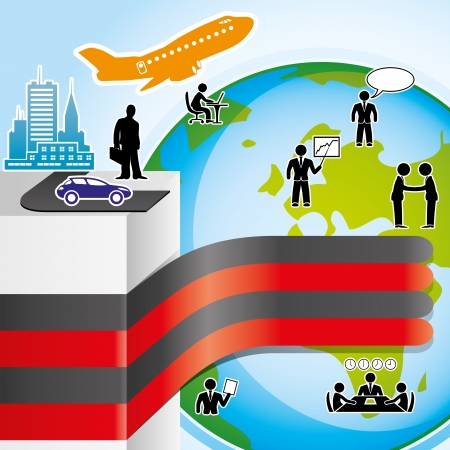Introduction to Transport Policy in the UK
Transport policy in the United Kingdom has undergone significant transformation over the past century, evolving alongside changes in society, technology, and economic priorities. Today, transport plays a central role in everyday British life, connecting people with work, education, healthcare, and social opportunities across urban and rural communities alike. From the early days of railway expansion during the Industrial Revolution to the modern focus on sustainable travel and reducing carbon emissions, government strategies have consistently reflected wider societal needs and values. The current landscape is shaped by an intricate balance between supporting economic growth, ensuring accessibility for all citizens, and responding to environmental concerns. As a result, transport policy is not just about building roads or expanding railways; it is fundamentally about shaping how people live and interact within their local environments. Understanding its evolution helps highlight why issues of fairness, inclusivity, and long-term sustainability are now at the forefront of the UK Government’s approach.
2. Defining Social Equity in Transport
Social equity within the context of UK transport policy refers to ensuring that everyone, regardless of their background or personal circumstances, has fair access to mobility options. This principle underpins many government initiatives aimed at building an inclusive and fair society. Three fundamental aspects form the core of social equity in UK transport: inclusivity, accessibility, and affordability.
Inclusivity
Inclusivity means that transport systems should cater for all members of society, including those who are often marginalised or disadvantaged. This encompasses people with disabilities, older adults, low-income families, and ethnic minorities. The UK government strives to reduce barriers that prevent these groups from using public and private transport services. Initiatives such as the introduction of step-free access at railway stations and low-floor buses illustrate a commitment to making travel more inclusive.
Accessibility
Accessibility relates to how easily individuals can reach essential destinations such as workplaces, schools, healthcare facilities, and shops. In the UK context, accessibility is measured not just by physical infrastructure but also by the availability and frequency of services. For example, rural communities often face challenges due to limited bus routes or infrequent train services. Addressing these disparities is crucial for fostering equal opportunities across the nation.
Table: Key Factors Affecting Accessibility in UK Transport
| Factor | Urban Areas | Rural Areas |
|---|---|---|
| Public Transport Frequency | High | Low |
| Physical Infrastructure (e.g., step-free access) | Widespread | Limited |
| Connectivity to Essential Services | Good | Poor |
| Affordability Schemes (e.g., concessions) | Available | Sporadic/Variable |
Affordability
The cost of transport can be a significant barrier for many individuals and families across the UK. The government implements several measures to keep travel affordable, especially for vulnerable populations. These include concessionary fares for older people and disabled passengers, as well as subsidies for certain rural routes. Making transport affordable helps bridge the gap between different socio-economic groups and supports wider participation in economic and social life.
Conclusion on Social Equity in UK Transport Policy
The UKs approach to transport policy recognises that inclusivity, accessibility, and affordability are critical for achieving genuine social equity. By focusing on these areas, the government aims to create a transport network that supports equal opportunity and quality of life for all residents.
![]()
3. The UK Government’s Strategy for Equitable Transport
The UK Government has taken a multi-faceted approach to ensure that transport policy actively promotes social equity across the country. At the heart of this strategy is the ambition to create an inclusive transport system where opportunities are accessible to all, regardless of background or location. By prioritising fairness, the government aims to tackle inequalities and foster social mobility through a range of policies, initiatives, and partnerships.
National Policies Driving Social Equity
Central government departments, such as the Department for Transport (DfT), have developed frameworks like the Inclusive Transport Strategy and the National Bus Strategy. These policies set out clear commitments to improve accessibility for disabled passengers, enhance rural connectivity, and reduce fare disparities between regions. Through legislative reforms and funding allocations, these strategies aim to remove longstanding barriers faced by disadvantaged groups when accessing public transport services.
Targeted Initiatives for Marginalised Communities
Recognising the unique challenges experienced by low-income households and those living in deprived areas, the government has rolled out schemes such as the Bus Service Improvement Plans (BSIPs) and discounted travel passes for young people and jobseekers. Investments in step-free access at railway stations and audio-visual announcements on buses are just some examples designed to make everyday journeys easier for everyone.
Partnerships with Local Authorities and Community Groups
A key component of equitable transport delivery involves collaboration with local authorities and third-sector organisations. The devolved administrations in Scotland, Wales, and Northern Ireland tailor their approaches to suit regional needs, supported by central funding where appropriate. Community transport providers also play a vital role in reaching isolated populations, ensuring no one is left behind due to lack of mainstream services.
Monitoring Progress and Ensuring Accountability
The government regularly publishes impact assessments and collects data on passenger experiences to measure progress towards its social equity objectives. These reviews help identify gaps in provision and inform future investments, reinforcing the commitment to continuous improvement across the transport sector.
4. Public Transport Accessibility and Regional Disparities
The UK government’s transport policy has long grappled with the challenge of ensuring equitable access to public transport across both urban and rural communities. A key aspect of social equity in transport lies in addressing the clear differences between city centres, suburban areas, and rural regions. Urban areas, particularly London, benefit from extensive networks of buses, trains, and underground systems with frequent services and integrated ticketing. Conversely, many rural and peripheral regions face infrequent bus routes, limited train connections, and a lack of infrastructure investment.
Assessment of Urban-Rural Differences
The contrast in public transport provision is stark when comparing major cities with remote villages or coastal towns. Urban dwellers typically have multiple travel options within short walking distances, while rural residents may need to walk several miles just to reach a bus stop or station. This disparity impacts employment opportunities, access to education, healthcare, and overall quality of life.
| Area Type | Average Bus Frequency (per hour) | Train Station Density (per 10 sq miles) | Integrated Ticketing Availability |
|---|---|---|---|
| Urban (e.g., London) | 6-12 | 4-6 | High |
| Suburban | 2-6 | 1-2 | Moderate |
| Rural | <1 | <1 | Low |
Regional Funding Inequalities
A persistent issue is the allocation of government funding for transport infrastructure. Historically, significant investment has been concentrated in London and the South East, perpetuating regional inequalities. While initiatives such as the Northern Powerhouse Rail and Midlands Engine aim to redress this balance, progress has often been slow due to budget constraints and political priorities.
Funding Distribution by Region (2022 figures)
| Region | Annual Transport Spend per Capita (£) | Main Focus of Investment |
|---|---|---|
| London & South East | £882 | Tubes, Buses, Cycling Infrastructure |
| Northern England | £379 | Rail Modernisation, Bus Networks |
| South West & Rural Areas | £245 | Road Upgrades, Limited Bus Subsidies |
Initiatives to Improve Accessibility Across the Country
The UK government has launched several schemes to tackle these disparities. The National Bus Strategy (“Bus Back Better”) prioritises improving bus frequency and affordability outside London. The Community Rail Partnership supports local rail projects in underserved areas. Furthermore, devolved funding to combined authorities allows regions such as Greater Manchester and West Yorkshire more control over their own transport planning. These measures are designed to enhance connectivity, reduce car dependency, and promote sustainable travel options for all communities.
5. Impact on Marginalised and Vulnerable Groups
The influence of transport policy on marginalised and vulnerable groups remains a pressing concern within the UK’s wider agenda for social equity. While government strategies often reference inclusivity, the practical realities experienced by low-income households, disabled people, and other at-risk communities can be starkly different from policy intentions.
Low-Income Households
For many low-income families across Britain, public transport is not only a necessity but also a lifeline to employment, education, and essential services. However, fare increases, service cuts, and limited routes in deprived areas disproportionately affect those with the fewest alternatives. While initiatives such as concessionary travel passes exist, these are not always available at all times or on all modes of transport, meaning that affordability barriers persist for some of the most vulnerable citizens.
Disabled People
The UK Government has made commitments to improve accessibility, yet disabled people still face significant challenges when using public transport. Step-free access is inconsistent across rail and underground stations; bus stops may lack tactile paving; and booking assistance for train journeys can be unreliable. These gaps mean that despite legal protections under the Equality Act 2010, disabled individuals frequently encounter exclusion from fully participating in society due to inadequate transport provision.
Other Vulnerable Communities
Older adults, refugees, ethnic minorities, and rural populations also experience barriers tied to transport policy shortcomings. Rural bus cuts leave villages isolated; language barriers can limit access to information for newcomers; and fears about safety or discrimination may deter usage among certain demographic groups. While targeted schemes exist in some localities—such as community-run minibuses or translation services—these are often patchy and rely heavily on volunteer efforts rather than robust governmental support.
Policy Gaps and Challenges
Although recent policy documents acknowledge these issues, critics argue that implementation lacks urgency and sufficient funding. The focus on infrastructure investment often overlooks operational needs—such as service frequency or staff training—that directly impact marginalised users. Moreover, consultation processes do not always adequately involve those most affected, resulting in solutions that may miss the mark for real-world inclusion.
Towards Greater Social Equity
Achieving social equity through transport policy demands more than symbolic gestures; it requires ongoing dialogue with affected communities and a commitment to adapting services to their evolving needs. Only through sustained investment in accessible design, affordable fares, and comprehensive service coverage can the UK move closer to a truly inclusive transport system for all.
6. Community Engagement and Public Consultation
In the UK, community engagement and public consultation are cornerstones of transport policy, particularly in efforts to ensure social equity. The government recognises that meaningful involvement of the public is essential for crafting transport solutions that genuinely address the needs of diverse communities. As part of this commitment, various approaches have been adopted to gather input from residents, local businesses, advocacy groups, and vulnerable populations.
Government Mechanisms for Engagement
The UK Government employs a range of mechanisms to facilitate public participation in transport planning. These include open consultations on major policy documents, citizen panels, workshops, and online surveys. Local authorities often hold town hall meetings or drop-in events where stakeholders can voice their concerns or suggestions directly to decision-makers. Transport for London (TfL) and regional bodies like Transport Scotland frequently publish draft plans online and invite feedback before implementation.
Focus on Inclusivity
Special emphasis is placed on reaching underrepresented groups who might otherwise be excluded from traditional consultation processes. This includes offering materials in multiple languages, providing accessible venues, and collaborating with community organisations to ensure a broad spectrum of voices are heard. The aim is not just token consultation but genuine partnership in shaping outcomes that reflect community priorities.
Case Studies: Best Practice Examples
One notable example is the extensive consultation process undertaken for the HS2 high-speed rail project, which included targeted outreach to communities along the proposed route. Similarly, city-level initiatives such as Manchester’s Clean Air Zone featured iterative public feedback loops that resulted in significant adjustments to final plans. These examples highlight how sustained engagement can lead to more equitable and widely accepted transport solutions.
Overall, the UK’s approach underscores the importance of transparency and accountability in transport policy-making. By actively involving the public throughout the planning process, the government seeks to build trust, address local disparities, and deliver transport systems that serve everyone fairly.
7. Challenges and Future Directions
Despite the UK Government’s ongoing commitment to fostering social equity through transport policy, several challenges persist that hinder the full realisation of equitable access for all communities. One of the most significant obstacles remains the enduring regional disparities between urban centres and rural or peripheral areas, where public transport options often fall short of meeting residents’ everyday needs. This so-called ‘postcode lottery’ continues to affect job opportunities, healthcare access, and educational attainment for those in less-connected regions.
Another challenge lies in the affordability of transport. While some schemes, such as concessionary fares for certain groups, have eased the burden for many, rising travel costs still disproportionately impact low-income households. Without targeted interventions to address these financial barriers, transport policies risk perpetuating existing inequalities rather than alleviating them.
Accessibility is an ongoing concern as well, especially for disabled individuals and those with mobility impairments. While notable progress has been made—such as step-free access at many train stations—gaps remain in both infrastructure and service provision. Continued investment in inclusive design and staff training is essential if the UK is to deliver truly equitable transport networks.
Looking forward, future policy development will need to focus on integrated approaches that go beyond physical infrastructure improvements. For instance, leveraging digital technology can help bridge information gaps and empower users to make informed travel choices. Supporting local authorities with devolved powers and adequate funding will also be crucial to tailor solutions to specific community needs rather than adopting a one-size-fits-all approach.
Moreover, with growing environmental concerns and commitments to net zero targets, it is vital that sustainability goals align with social equity objectives. The expansion of active travel infrastructure and low-emission zones must be designed carefully to ensure they do not unintentionally disadvantage vulnerable groups. Community engagement should remain at the heart of all future transport planning to ensure diverse voices are heard and accounted for.
In summary, while substantial progress has been made in promoting social equity through UK transport policy, addressing these persistent challenges requires innovative thinking and a steadfast commitment to inclusive practice. By remaining responsive to evolving needs and embracing holistic, locally informed solutions, the UK can continue moving towards a fairer and more accessible transport system for everyone.


